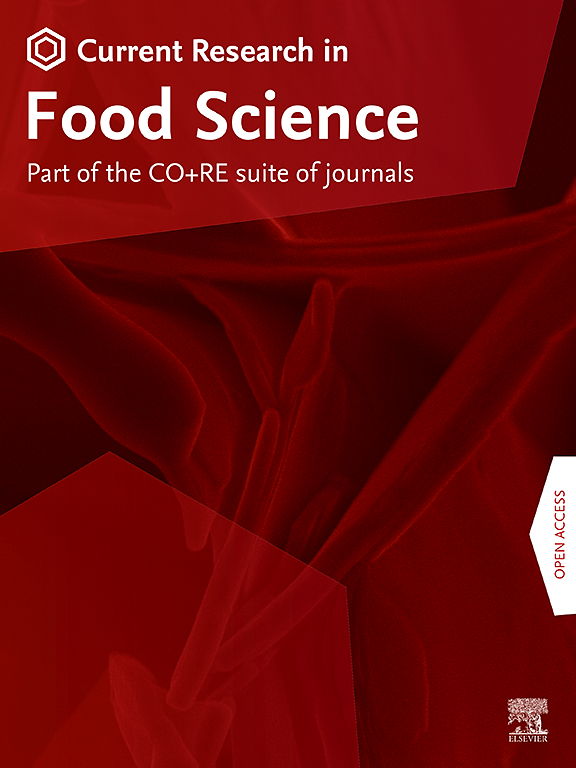Enhancing water solubility of phytosterols through Co-amorphization with food-grade coformers
IF 6.2
2区 农林科学
Q1 FOOD SCIENCE & TECHNOLOGY
引用次数: 0
Abstract
Phytosterols (PS) offer significant health benefits in human diet, but its poor solubility limits its effectiveness and application. This study explored enhancing PS solubility by testing thirteen food-grade coformers, three preparation methods and proportions screening to obtain the optimal formulation. Nicotinamide (Nic) was identified as the most effective coformer. A 20:1 (w/w) PS-Nic co-amorphous (CM) mixture, prepared via freeze-drying, achieved a solubility of 1536.4 μg/mL, significantly higher than pure PS. X-ray diffraction and differential scanning calorimetry confirmed the amorphous state of the mixture. Fourier-transform infrared, Raman, and 1H NMR spectroscopies, along with molecular dynamics simulations, revealed strong intermolecular interactions between PS and Nic. The PS-Nic CM demonstrated up to 60% in vitro dissolution and release within 2 h and maintained stable after storage at 4 °C for 6 months and under accelerated conditions equivalent to 10 months at room temperature. In sum, the crystal structure of PS was altered, and formed a co-amorphous system by using Nic as the optimal ligand via lyophilization to increase solubility. These findings suggest that the PS-Nic CM system has potential applications in functional foods, offering a feasible strategy to enhance the bioavailability of PS.

通过与食品级共形物的共定型提高植物甾醇的水溶性
植物甾醇(PS)在人类饮食中具有重要的健康益处,但其较差的溶解度限制了其有效性和应用。本研究通过测试13种食品级共形物、3种制备方法和配比筛选来探索提高PS溶解度的方法。烟酰胺(nicinamide, Nic)是最有效的共成体。冻干法制备了比例为20:1 (w/w)的PS- nic共非晶态(CM)混合物,其溶解度为1536.4 μg/mL,明显高于纯PS, x射线衍射和差示扫描量热法证实了混合物的非晶态。傅里叶变换红外光谱、拉曼光谱和1H核磁共振光谱,以及分子动力学模拟,揭示了PS和Nic之间强烈的分子间相互作用。PS-Nic CM在2 h内体外溶出释放率高达60%,在4°C下保存6个月,在相当于室温的加速条件下保存10个月后保持稳定。综上所述,PS的晶体结构发生了改变,以Nic为最佳配体,通过冻干提高溶解度,形成了共非晶体系。上述结果表明,PS- nic CM系统在功能性食品中具有潜在的应用前景,为提高PS的生物利用度提供了可行的策略。
本文章由计算机程序翻译,如有差异,请以英文原文为准。
求助全文
约1分钟内获得全文
求助全文
来源期刊

Current Research in Food Science
Agricultural and Biological Sciences-Food Science
CiteScore
7.40
自引率
3.20%
发文量
232
审稿时长
84 days
期刊介绍:
Current Research in Food Science is an international peer-reviewed journal dedicated to advancing the breadth of knowledge in the field of food science. It serves as a platform for publishing original research articles and short communications that encompass a wide array of topics, including food chemistry, physics, microbiology, nutrition, nutraceuticals, process and package engineering, materials science, food sustainability, and food security. By covering these diverse areas, the journal aims to provide a comprehensive source of the latest scientific findings and technological advancements that are shaping the future of the food industry. The journal's scope is designed to address the multidisciplinary nature of food science, reflecting its commitment to promoting innovation and ensuring the safety and quality of the food supply.
 求助内容:
求助内容: 应助结果提醒方式:
应助结果提醒方式:


